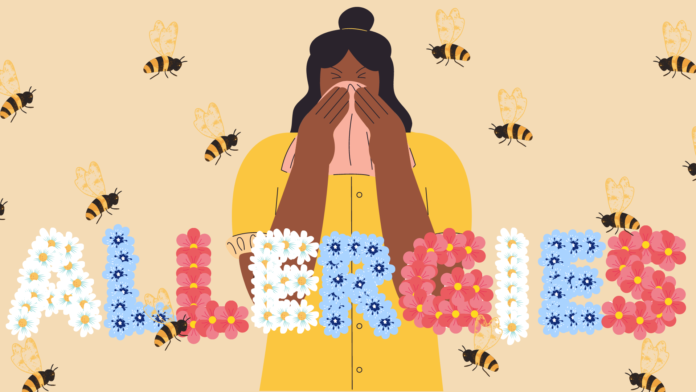Ah, it’s finally summertime. The sun is shining, the birds are chirping, everything is itchy, your nose can’t decide whether it’s runny or stuffy, you’re sneezing everywhere, and you just want to go back to bed.
Wait a minute… that doesn’t sound like a very fun summer.
Roughly one in six Canadians suffer from seasonal allergies. According to Asthma Canada, pollen is the most likely culprit.
How allergies work
Pollen is released from various types of trees, grasses and weeds. According to the Asthma and Allergy Foundation of America, when pollen reaches the body, the immune system mistakes them for something dangerous. In an attempt to protect itself, the immune system releases antibodies and histamines.
Histamine acts as a neurotransmitter, but also serves a crucial role in the immune system. The release of histamines in the blood causes the typical allergy symptoms such as a runny nose or itchy eyes.
Sneezing season
Seasonal allergies are, well, seasonal. They occur most frequently in the spring and summer when the warmer weather hits and flora is in full bloom.
In 2017, CBC reported that hot, sunny weather causes pollen to hang in the atmosphere—worsening their effect on those with seasonal allergies.
So, if a hot, sunny summer makes the allergy season worse, does that mean climate change plays a role in seasonal allergies?
Climate change and allergies
National Geographic reports that pollen allergies seem to have first appeared about 150 years ago—although the exact reason for this is unknown.
What is clear is that warmer temperatures and higher levels of carbon dioxide cause plants to grow more vigorously and increase the production of pollen, said Charles W. Schmidt in an issue of Environmental Perspectives.
Climate change will also create longer growing seasons in particular areas and make former inhabitable climates available for the growth of a wider variety of flora. This suggests that the duration and extent of the allergy season could be greatly increased.
Just in case you needed another reason to get on board with climate action, you can add seasonal allergies to the list.
I need a remedy
The itches, the sniffles, and drowsiness do not make the warm weather enjoyable. The good news is that there are some remedies that can help subside allergy symptoms.
Mayo-Clinic lists several types of over-the-counter medications that can relieve allergy symptoms, including oral antihistamines, decongestants, nasal sprays, and combination medications.
But if you’re one of the lucky few like me (*sarcasm warning*), these medications will cause drug interactions and/or intolerances and you won’t be able to use any of them!
If that’s the case, Mayo-Clinic also lists countless habits and actions you can take to reduce your exposure to allergens.
Most actions encourage limiting exposure to outside elements including staying indoors when it is dry and windy, removing clothes and showering after spending time outside, keeping windows and doors closed, and avoiding hanging clothes outside to dry.
Other symptom-reducing habits can be done from indoors such as checking pollen counts and avoiding going outside when counts are high (especially in the morning), using an air conditioner, dehumidifier, and HEPA filter, and rinsing your sinuses.
You are what you eat
Did you know that your body can confuse a fruit protein with pollen and trigger a reaction?
Oral allergy syndrome (OAS) is a food-related allergy that is connected to environmental allergies. According to Healthline, OAS is common in adults.
There is a long list of fruits, vegetables and nuts that can trigger OAS, but generally, it is of greater concern if you consume these foods during allergy seasons when your body can easily confuse the proteins with pollen.
The bottom line
If you are experiencing new or worsening allergy symptoms, or your allergies have never been diagnosed, it’s probably best to see a doctor. That way you can stop sneezing and get back to enjoying your time in the sun!
Featured graphic by Jillian Piper.





![Here’s how your favorite media platforms shape your world view without you realizing it Advertising revenue and subscriptions are the main source of income for news outlets. [Graphic by Sara Mizannojehdehi]](https://charlatan.ca/wp-content/uploads/2021/07/11BE7ADB-1CC8-46E8-ADB4-568B3C7F1265-218x150.jpeg)
